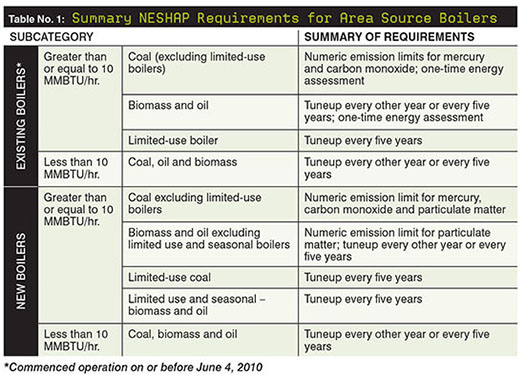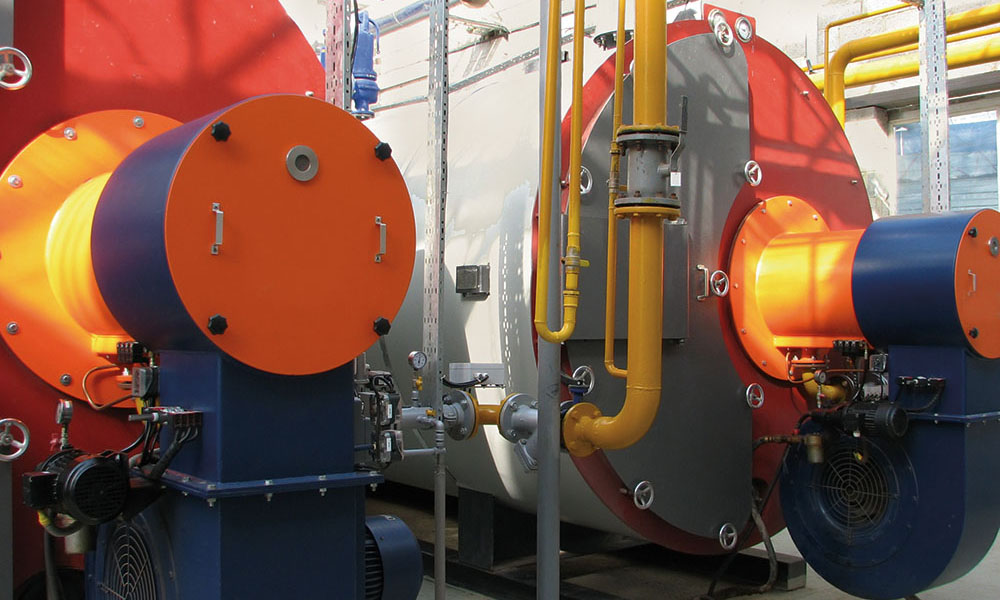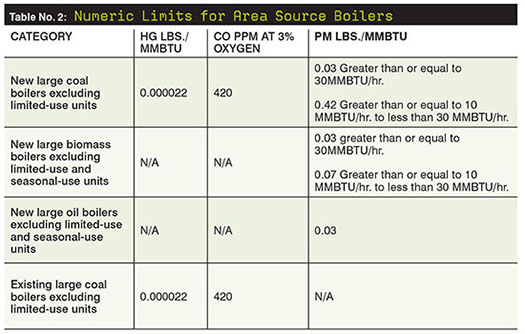On Dec. 21, 2012, The Environmental Protection Agency issued final changes to Clean Air Act standards for major and area source boilers and commercial/industrial solid waste incinerators. These changes are projected to significantly reduce toxic air pollution, thus providing a prescription for further improving environmental health.
Many are unclear about how or if these regulations will affect healthcare facilities and the extent of the impact of this rule depends on the type and level of emissions a facility generates. The good news is healthcare organizations have three years to comply and may also have the option to apply for a one-year extension. But let’s first break down the latest version of the National Emission Standards for Hazardous Air Pollutants.
Impact of the regulations
The Clean Air Act requires the U.S. EPA to set national emission standards for hazardous air pollutants for various types of sources of air pollution. Industrial, commercial and institutional boilers are sources with mandated standards. According to EPA estimates, of the 1.5 million boilers in the United States, approximately 197,000 boilers will be subject to the regulations. Of these, approximately 2,300 will need to meet numerical standards while 194,700 boilers will comply through work practices — tuneups and assessments for example.
The most recent version of the EPA standard affects boilers and process heaters at both major and area sources of hazardous air pollutants emissions. The distinction between those two is simple, but important. A major source is a facility that has the potential to emit 10 tons per year (tpy) or more of any single hazardous air pollutant and/or 25 tpy or more of total HAPs. An area source has the potential to emit less than 10 tpy/25 tpy.
Area sources: the fine print
By that definition, most healthcare facilities qualify as an area source where the rules apply to boilers that fire coal, oil, biomass or other solid or liquid non-waste material. Natural gas-fired boilers located at area sources are not subject to these regulations. If the boiler periodically fires a liquid fuel for less than 48 hours per year, it is still considered a natural-gas-fired boiler. If you have boilers that combust solid waste, you will want to determine if they are subject to the Commercial Industrial Solid Waste Incinerator emission standards. Other notable exceptions from these regulations include temporary boilers, waste heat boilers, electric boilers and hot water heaters with a capacity of less than 120 gallons or a heat input of less than 1.6 MMBTU/hr.
The area source regulations primarily define numeric emission limitations and set requirements related to performing tuneups and a one-time energy assessment. These requirements are not one-size-fits-all. They differ depending on the type of fuel used, size of boiler and how the boiler is used. Tables 1 and 2 summarize the area source requirements based on these three types of boilers:
- Large boilers have a heat input greater than or equal to 10 MMBTU/hr.
- Limited-use boilers have a capacity factor of no more than 10 percent.
- Temporary boilers are shut down for seasonal conditions for at least seven consecutive months every 12 months.
 The scope of the energy assessment
The scope of the energy assessment
One-time energy assessments referenced in table no. 1 must include these specific activities:
- A visual inspection of the boiler system.
- An evaluation of operating characteristics of the affected boiler systems, specifications of energy use systems, operating and maintenance procedures and unusual operating constraints.
- An inventory of major energy-use systems consuming energy from affected boiler(s) that are under control of the boiler owner or operator.
- A review of available architectural and engineering plans, facility operations and maintenance procedures and logs, and fuel usage.
- A list of major energy conservation measures within the facility’s control.
- A list of the energy savings potential of those energy conservation measures.
- A comprehensive report detailing ways to improve efficiency, the cost of specific improvements, the benefits and the timeframe for recouping those investments.
In addition, the minimum amount of time the energy assessor spends onsite is stipulated in the regulations and is dependent on annual fuel use.
Tuneups are required every five years for both new and existing limited-use boilers, seasonal boilers, oil-fired boilers with heat inputs less than 5 MMBTU/hr, and boilers equipped with an oxygen trim system. Biomass boilers, coal-fired boilers with a heat input less than 10 MMBTU/hr and oil-fired boilers with a heat input greater than or equal to 5 MMBTU/hr. require a tuneup every other year. Large coal-fired boilers with a heat input greater than or equal to 10 MMBTU/hr. are not required to have a tuneup.
Initial tuneup requirements
Facility managers will want to start planning to meet a March 20, 2014 deadline. That is when it will be necessary to complete the initial tuneup for existing sources. Ensure the initial tuneup includes the following required tasks:
- Clean or replace burner components as necessary
- Optimize the flame pattern
- Ensure the system controlling air to fuel ratio is correctly calibrated and functioning properly
- Optimize CO emissions
- Measure CO and oxygen emissions before and after the tuneup
- Maintain a tuneup report
If your boilers are subject to one or more of the numeric limits in table no. 2, you will need to evaluate their current emissions. If over the limits, it’s time to look into options for bringing them into compliance. These options may include adding post-combustion controls, improving current combustion controls and/or switching to a different fuel. If your facility has excess boiler capacity, you may be able to avoid the requirements of table no. 2 by limiting the annual operations of a particular boiler so that it can be designated as a limited-use boiler.
More important dates
If your facility is subject to the Area Source BACT rules, submit a Notice of Applicability to EPA by Jan. 20, 2014 or within 120 days of startup of a new unit.
Note that new area source boilers need to be in compliance upon startup, while existing area source boilers have until March 21, 2014 to comply. Submit a notice of compliance twice a year stating whether you were in or out of compliance with the regulations for the previous six months. The first notice of compliance is due no later than July 19, 2014. Emission test reports for both new and existing units are due by July 19, 2014 or within 60 days of the test, whichever is earlier.
For more information, see EPA Boiler Compliance at Area Sources.
Author: Thomas Fitzpatrick, P.E., is a department manager at SSOE Group. He has more than 30 years of experience in the power industry and is responsible for managing various utility-related projects.
Photo: Yury Maryunin/Dreamstime
Editor’s Note: This article reviewed only the requirements for boilers located at area sources. For information on major source requirements, see EPA Regulatory Actions.




